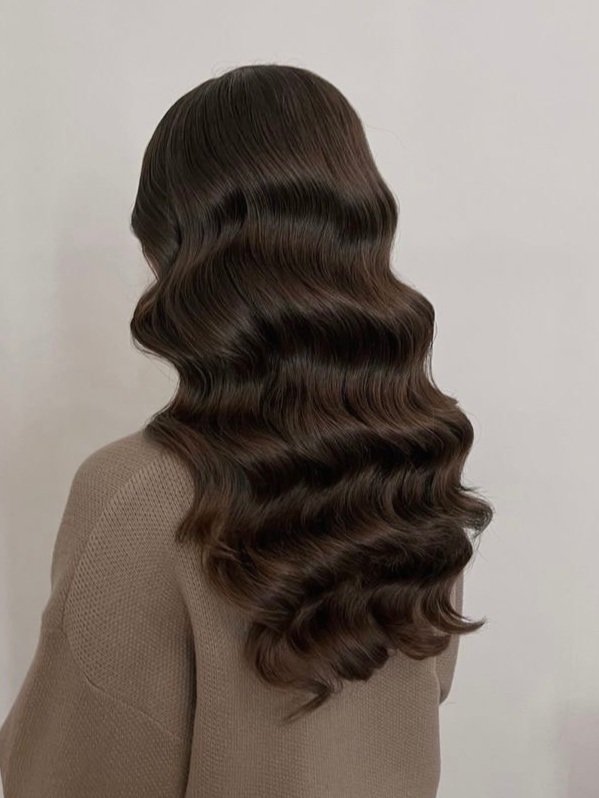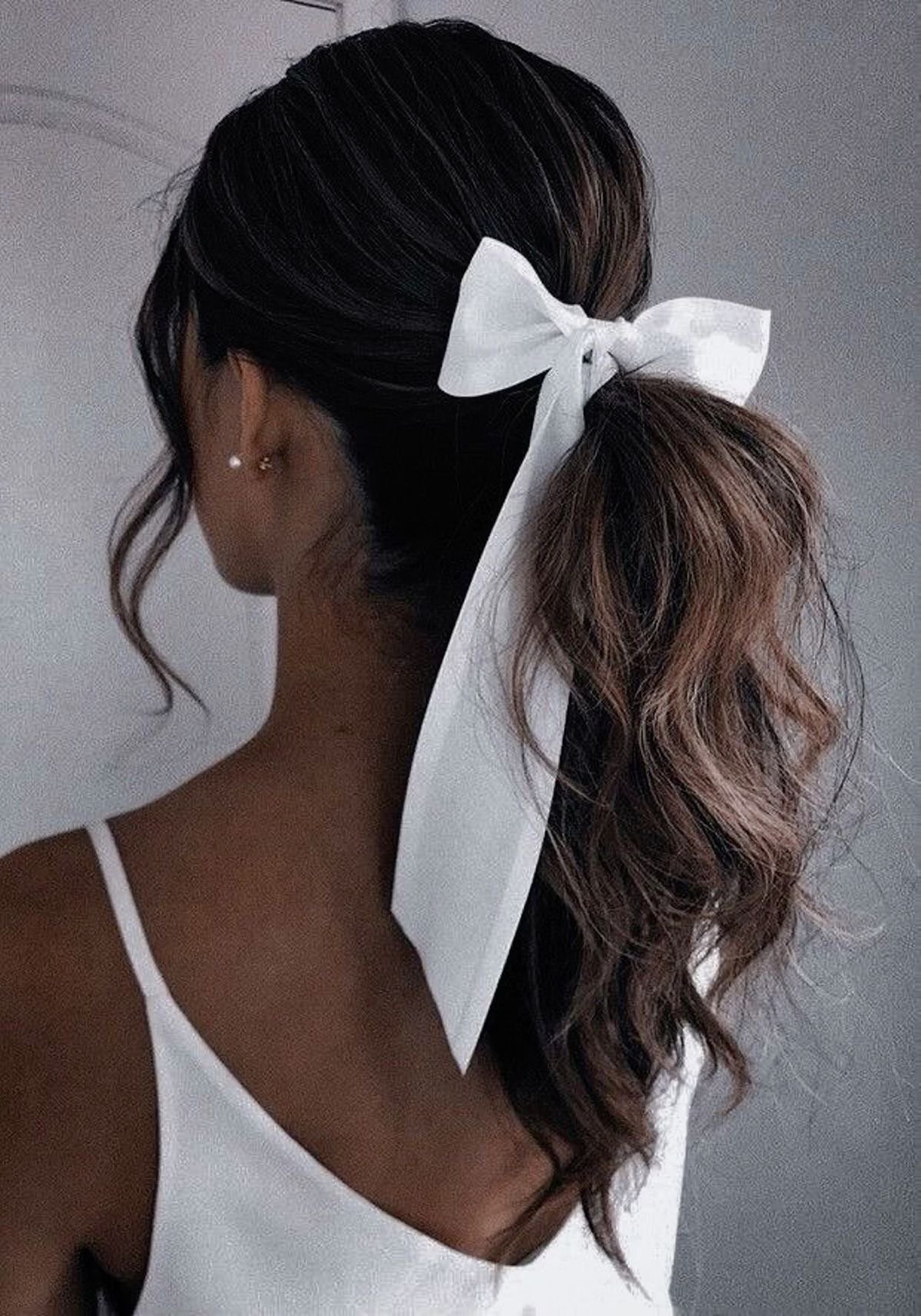Hair Trends of 2024 | The best hair styles to try this year
Looking to change up your look this summer? Here are some of our favourite hair trends of 2024!
Looking to change up your look this summer? Here are some of our favourite hair trends of 2024! Whether you’re looking for a complete re-style or just want some cute, trendy accessories, keep reading to find out more…
90’s Bob
The 90’s style bob is back and we couldn’t be happier! Made famous by the likes of Jennifer Anniston playing ‘Rachel’ in Friends, this classic style embodies a level of effortless sophistication.
Inspired by Old Hollywood Glamour, this style is being brought back to our screens by model, Hailey Beiber and actress, Sydney Sweeney.
This rebellious style is full of body and is sure to enhance your facial features!
Bombshell Bangs
After recently supporting the Eras Tour, Sabrina Carpenter is a global sensation!
Her signature bombshell bangs are brought to life by her sun-kissed highlights.
This glam, retro look is sure to dominate in 2024!
Expensive Brunette
We’re sure you’ve come across this trend when scrolling on TikTok, the ‘expensive brunette’ trend is here to stay and here’s how to get it…
1- Keep on top of your trims - Getting rid of those dry ends is sure to improve the health and appearance of your hair.
2- Add moisture! Invest in moisture-rich products such as masks and serums, this will add a glossy high-end shine to your hair whilst also maintaining the condition.
3- Keeping up with your colour appointments. Old, grown-out colour looks uncared for and can make your cut look lifeless.
bronde
The fusion between blonde and brunette. This look can be achieved by adding both highlights and lowlights to achieve a unique overall colour.
Can’t decide whether you are more suited as a blonde or brunette? This could be the perfect colour for you!
The beauty of this colour is that you can have it toned more on the warmer or cooler side depending on preference.
Hair Bows
Recently seen on Lana Del Rey at the Grammy’s, hair bows are becoming the accessory of 2024.
Not only are bows a great way to keep hair out of your face, they also give that soft, feminine touch to any look.
The Ultimate Guide: To Finding Your Curl Pattern
Figuring out your hair type can be super tricky! But despite the decoding mission it can feel like, identifying your curl pattern can be super useful for knowing where to start when you're shopping for hair-care products or creating a hair care routine. Keep reading to find your curl pattern and how best to care for it..
You’ve probably seen those vague hair texture charts before, with the squiggly lines and letters and numbers… confusing right? Figuring out your hair type can be super tricky! But despite the decoding mission, it can feel like, identifying your curl pattern can be super useful for knowing where to start when you're shopping for hair-care products or creating a hair care routine. Keep reading to find your curl pattern and how best to care for it.
DID YOU KNOW?
Your curl type is actually determined by the shape of the follicle that your hair grows out of!
Flat or oval-shaped follicles lead to curly hair.
Circular follicles create straight hair.
Your curl pattern depends on the shape that the strands of your hair make. Does your hair kink, curve, or spiral?
This is how the hair texture system breaks down:
There are broad categories (1 to 4), with 3 sub-groups in each category (A to C).
Type 1s are straight
Type 2s are wavy
Type 3s are curly
Type 4s are coily
Then, the sub-groups of A to C are based on the diameter of your wave/curl.
Type A’s have a wider pattern size
Type Bs medium
Type Cs the smallest of the three.
I hope this has helped you to understand the groups a little better. Now on to identifying your curl pattern
Type 2
Type 2 hair is what’s generally referred to as “wavy”, it has a distinctive S pattern but lays quite close to the head.
Type 2A
2A hair is characterised by that beach barely-there tousled texture, that’s very easy to straighten. This texture is usually quite fine and flat at the roots, so avoiding any heavy styling products is advised. Anything too heavy will weigh down your hair, creating flat and lifeless waves.
The best product for this hair type is a leave-in conditioner and a frizz control gel. If you want to add a little volume add some mousse in. If not the leave-in and gel will work perfectly.
Type 2B
2B hair has a distinct S wave from the midlength to ends but lays flat to the crown of the head. These waves are smaller in diameter than 2A strands and are a little harder to straighten.
These pretty surfer waves can get real frizzy real quick! With this wave texture, you need products that can eliminate frizz and soothe your dehydrated locks. I would recommend applying a light leave-in conditioner to your damp hair. A small amount will nourish and condition your hair, in order to prevent frizz, but won’t be heavy enough to make your waves heavy and greasy!
Type 2C
2C waves are much thicker and, therefore, more susceptible to frizzing. As you can see, the S-bends are very well-defined and begin right from the roots.
This hair type particularly should avoid over-washing, so you don’t strip your hair of its natural essential oils! I suggest co-washing between shampoo days to avoid product build-up. Co-washing refers to rinsing the hair with a light conditioner instead of shampoo! Leave-in conditioners are essential for this hair type to avoid major frizz. Try layering with an airy water-based mousse to set in your natural wave pattern after hydrating. Do not use a regular towel on your head, as this will cause the cuticles to rough up and create plenty of frizz. Invest in a microfibre towel.
Type 3
Type 3 is your usual ‘curly’ hair! This can range from loose, round loops to tight, springy spirals. These hair textures are particularly prone to frizz.
Type 3A
3A curls are large, loose curls. This texture is usually more delicate than the other Type 3’s and can be easier to smooth or blow out. 3A hair tends to have various patterns: some with clear loops and some stretched out and undefined.
For well-defined curls, apply a leave-in conditioner throughout the hair on damp hair. Next, apply a mouse on the roots for some volume and a little hold. Followed by a sculpting gel to give you that definition and hold throughout.
TIP: I like to brush section by section to enhance volume and make those curls pop!
Diffuse, and you're on your way.
Type 3B
3B hair types have springy ringlets with a circumference similar to your index finger. They are tighter and coarser than 3A curls. Unlike 3A curls, which tend to lose their definition, 3B curls stay coiled no matter how much you play with them. But they’re also even more prone to frizz and dryness.
The products you choose for your hair should focus on dehydration and frizz. Layer on a cocktail of moisturising and humidity-blocking products (leave-in conditioner, curl cream and moisturising gel, for example) to enhance your curls and keep them healthy. Similar to type 3A, apply products when wet, and detangle.
TIP: for super defined spirally ringlets, finger coil each of your curls while they’re still wet.
Type 3C
3C curls are tight corkscrews that can range in circumference and shrink up when dry. These strands are more densely packed together and are therefore very voluminous. Unfortunately, 3C curls are more prone to dryness, breakage, and loss of definition.
The right mix of moisturising creams, puddings, oils, and conditioners for you will keep your curls happy! The LOC (Leave-in conditioner, then Oil and finally Cream) method of application can work well for this texture.
TIP: Leave-in conditioner love the hair. Oil seals the moisture in. The cream is used to shape and define your curls. Opt for products which contain holding properties
Type 4
Type 4 characterises coily/kinky hair, commonly referred to as Afro. This curl pattern is naturally very dry in texture but can be soft and fine or coarse and wiry. Strands form very tight, small curls of zig-zags right from the scalp and are prone to shrinkage.
For tighter curls and courser textures, it is super important to make sure that the hair is hydrated. You are able to use heavier products. A leave-in conditioner, cream and a gel can be used on tighter curls
Type 4A
Type 4A has tight and springy, coils or curls. Because 4A hair has such a well-defined S pattern, they tend to retain moisture better than the other type 4 hair textures, which means they also experience the least amount of shrinkage.
Even so, your coils need some serious hydration to keep them healthy. Like 3C hair, a combo of creams, oils, and gels will maximise your corkscrew texture. The LOC method is also recommended for this texture to seal in all that nourishing moisture.
A gel product is needed for tighter curls to keep them well defined.
Type 4B
Unlike the other textures so far, 4B and C textures actually bend in a sharp, zigzagged Z shape, rather than curling around themselves in an S pattern. As you may have noticed, each curl type is characteristically drier the farther it is on the scale. This means type 4 hair (especially B and C) is the most prone to moisture loss, shrinkage, and breakage. All of which means that your main styling goal is to infuse each strand with hydration while keeping your coils defined and stretched, so look for heavy, intensely moisturising products.
Once again, the LOC (creams, oils, and gels) method is recommended for this hair type, but some tweaks can be made to cater to this hair texture in particular. One of these is to use an oil serum rather than a traditional oil, as they are usually heavier and more moisturising. Additionally, try replacing the cream step with a gel for extra definition.
Type 4C
4C textures are similar to 4B, but the tightly coiled strands are more fragile and have a very tight zig-zag pattern that is sometimes indistinct to the eye. This hair type experiences the greatest amount of shrinkage and is also the most sensitive to breakage!
Since shrinkage and dryness are major concerns for these tightly-coiled folks, use a liberal amount of leave-in moisturize. Castor oil is also an excellent hydrator and sealant for this dehydrated texture. Once again, the tried and tested LOC method works here, but with this texture: beginning your routine on dry, slightly picked-out hair to curb shrinkage.
Try twisting the hair after applying the cream and leave to dry before undoing completely.
Congratulations! You’ve identified your curl pattern, now go and enjoy your new routines.
If you enjoyed this blog, share it with a friend.

























Experiencing menopause is a natural and inevitable phase of a woman's life, marked by a series of hormonal changes that can have far-reaching effects on various aspects of health. One often-overlooked aspect is its impact on hair health. Just as menopause changes mood, sleep patterns, and metabolism, it can also lead to shifts in the texture, thickness, and overall condition of your hair.